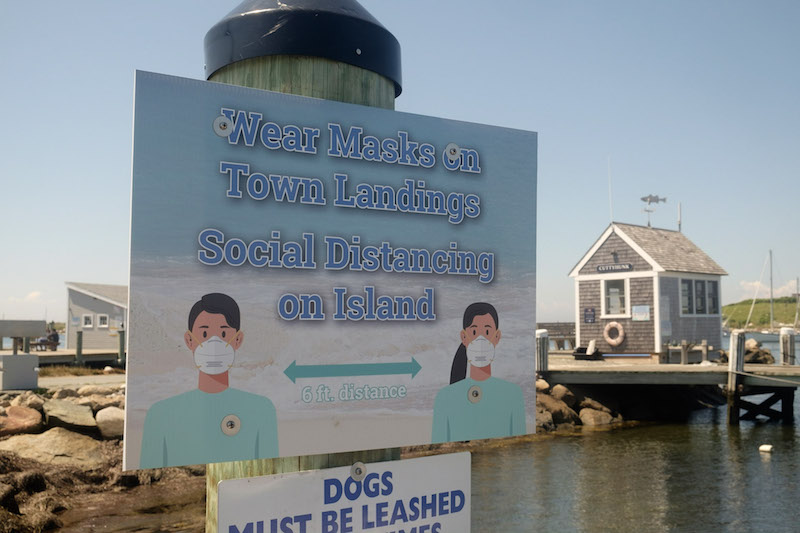Remote Cuttyhunk — a tiny dot on the far end of the Elizabeth islands chain — has reported its first case of Covid-19, selectman Gail Blout confirmed by telephone Friday.
The coronavirus has now spread to the smallest town in Massachusetts and the seventh town in Dukes County, Gosnold, leaving no community untouched as its reach extends to the remotest parts of the state.
Ms. Blout told the Gazette that the individual — a female — tested positive Wednesday and is a Cuttyhunk seasonal resident and homeowner. Ms. Blout said that the woman had been on the Island for approximately a week and a half before she started showing symptoms.
“The individual went off-Island to be tested,” Ms. Blout said. “Initially they thought they had allergies, because they do have allergies. But they started to get, not serious symptoms, but symptoms that made her feel pretty positive that it could be coronavirus.”
Cuttyhunk is the only public island in the Elizabeths and is home to nearly all the town of Gosnold’s population. While Ms. Blout estimated the Island’s current summer population at around 200 to 250 — about two thirds of its normal 400 person summer census — the population drops to a few hardy two dozen or so during the winter.
The Island is only accessible over the water, via passenger ferry. Golf carts are the preferred form of transportation when on land.
The positive test result came back on Wednesday, Ms. Blout said, prompting a full-scale response from one of the state’s smallest public health infrastructures.
During the summer, Cuttyhunk has a rotating program for doctors on vacation, each of whom come for one week and are provided a place to stay — meaning there is only one doctor on Island at any given time. The closest hospital is a choppy boat ride away, in New Bedford. The board of selectmen also act as the board of health, meaning they had to coordinate with state epidemiologists about the best course of action.
Practices now familiar for health officials throughout the rest of the state, like contact tracing and the use of personal protective equipment, were new to Cuttyhunk officials before Tuesday.
“Once we heard about the confirmed case of the virus, the individuals who were directly exposed were notified and directed to quarantine,” Ms. Blout said. “We were able to get some test kits. They arrived this morning. And we were able to test those primary contacts who are still on the Island.”
The doctor on Island, as well as fire chief Seth Garfield, who has the requisite outerwear to transfer sick patients if necessary, administered the tests for the individual’s close contacts on Friday, Ms. Blout said. The individual who tested positive is now off-Island, according to Ms. Blout.
While the pandemic has shuttered Cuttyhunk much like every other community in the commonwealth, forcing its one small market to only do call-in orders and its three eateries to do mainly take-out, Ms. Blout said the summer has brought new concerns about the ability to handle an influx of cases.
“We do not have a hospital. We do not have a pharmacy. We are concerned about what would happen if we had a lot of cases,” Ms. Blout said. “What we’d like to see happen, at least what we are thinking about, is that going forward, if anyone has any symptoms, that individual should leave the island, be tested, and seek appropriate medical attention elsewhere.”
Like other towns, officials in Cuttyhunk have instituted social distancing rules in the harbor, putting up signs requiring masks on any town docks. Ms. Blout said despite the Island being only about two-thirds full, the harbor — a frequent stopping off point for bass fisherman and recreational boaters — was still selling out on weekends.
The harbor had remained closed until late June as the island stayed shuttered against any influx.
Officials on the Island were awaiting the results from the close contacts on Friday, Ms. Blout said, uncertain about what an outbreak could mean for one of the state’s most isolated communities.
“We are waiting for these results, and hoping that they will turn out to be negative,” Ms. Blout said. “But I think we have to be prepared that this may not be the case, and be prepared to see how to handle forthcoming, potential confirmed cases, or people who have symptoms.”








Comments
Comment policy »